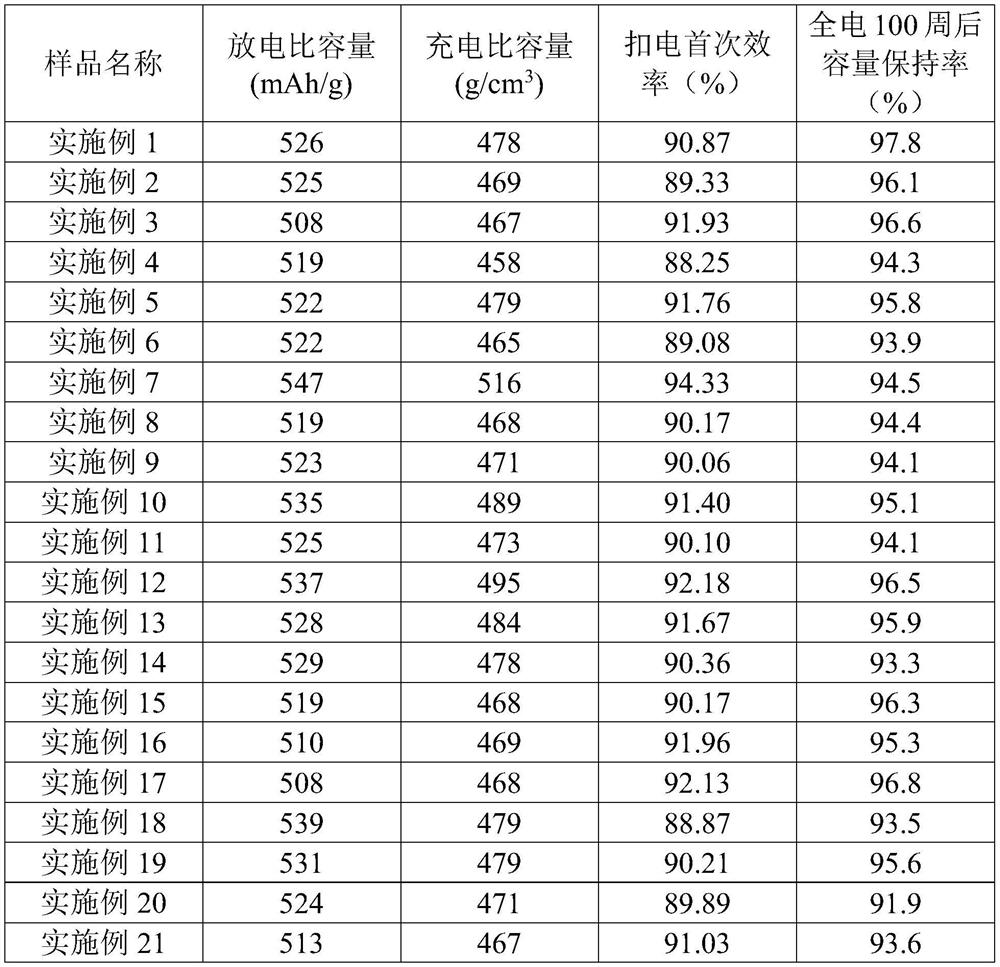Hard carbon negative electrode composite material and preparation method and application thereof
A composite material and hard carbon technology, applied in the preparation/purification of carbon, negative electrodes, battery electrodes, etc., can solve problems such as difficulty in controlling the amount of lithium fluoride attached, inconsistent pre-lithiation degrees, inconsistent material properties, etc. The effect of simplifying the production process and chemical process, reducing the amount of liquid injection, and reducing consumption
- Summary
- Abstract
- Description
- Claims
- Application Information
AI Technical Summary
Problems solved by technology
Method used
Image
Examples
preparation example Construction
[0046] A method for preparing a hard carbon negative electrode composite material, comprising the steps of:
[0047] Pre-oxidizing the carbon source to prepare a pre-oxidized carbon source;
[0048] mixing the pre-oxidized carbon source and a pore-forming agent, and preparing a hard carbon precursor with a porosity of 2% to 30% by heat treatment;
[0049] mixing the hard carbon precursor with a lithium-containing compound solution, and preparing a solid pre-lithiated hard carbon precursor by a solvothermal method;
[0050] Carrying out carbon coating treatment on the pre-lithiated hard carbon precursor to form a carbon coating layer on the surface of the pre-lithiated hard carbon precursor.
[0051] Specifically, the preparation method of the hard carbon negative electrode composite material provided by the present invention includes the following steps:
[0052] S100: Pre-oxidize the carbon source to prepare a pre-oxidized carbon source
[0053] In order to avoid the relat...
Embodiment 1
[0086] This embodiment provides a hard carbon negative electrode composite material and a preparation method thereof. Specific steps are as follows:
[0087] (1) Grinding and pulverizing 1000 g of sucrose into a powder with a particle size of D50 = 80 μm, and keeping it warm at 200° C. for 10 h in an air atmosphere to obtain a pre-oxidized carbon source.
[0088] (2) 100g of pre-oxidized carbon source and 5g of potassium hydroxide are ball milled and heat-treated in a nitrogen atmosphere at a temperature of 700°C for 3 hours to prepare a hard carbon precursor with a porosity of 24%;
[0089] (3) Using a ball mill to pulverize the hard carbon precursor obtained in step (2) to obtain a hard carbon precursor with D50=15 μm, cleaning and drying;
[0090] (4) Add 10.0g of the hard carbon precursor dried in step (3) and 50g of a 10wt% lithium carbonate aqueous solution to the hydrothermal kettle, heat at 180°C for 10h, separate the solid from the liquid and dry to obtain a surface-...
Embodiment 2
[0093] This example provides a hard carbon negative electrode composite material and its preparation method. The difference from Example 1 is that the heat-treated carbon source in step (1) is replaced by sucrose with crushed coconut shell with D50=100 μm. The particle size of the finished hard carbon negative electrode composite material finally obtained is D50=5 μm, the thickness of the carbon coating layer is 50 nm, and the weight ratio of the carbon coating layer is 2.1%.
PUM
| Property | Measurement | Unit |
|---|---|---|
| thickness | aaaaa | aaaaa |
| particle diameter | aaaaa | aaaaa |
| particle diameter | aaaaa | aaaaa |
Abstract
Description
Claims
Application Information
 Login to View More
Login to View More - R&D
- Intellectual Property
- Life Sciences
- Materials
- Tech Scout
- Unparalleled Data Quality
- Higher Quality Content
- 60% Fewer Hallucinations
Browse by: Latest US Patents, China's latest patents, Technical Efficacy Thesaurus, Application Domain, Technology Topic, Popular Technical Reports.
© 2025 PatSnap. All rights reserved.Legal|Privacy policy|Modern Slavery Act Transparency Statement|Sitemap|About US| Contact US: help@patsnap.com


